
Sejal Sheth, Shaniwar Peth, Pune
Profession: Dentist
Today, let’s visit, Shaniwar Peth, a densely populated neighborhood in Pune city.
This area has history of more than 300 years. Many heritage structures and memories of old Pune can be found here.
Eventually the old residential buildings, called “wada” made way to new apartment buildings. Roads built for cycles and horse-drawn chariots, now are over-burdened with heavy automobile traffic.
When I heard about Sejal’s garden, my reaction was, Really? A garden on the terrace in this area? Quite unbelievable.
Yes, many old growth trees exist here. So, area is certainly not completely devoid of green. But still, a garden blossoming amidst barren rooftops around, is a surprise and a great treat.
Here is why and how Sejal started her terrace garden
She wanted to have toxic-free food for her family, as much as possible.
In agriculture, a variety of chemical fertilizers and pesticides are used to boost crop growth and protect produce from pest attacks. Traces of these toxic chemicals remain on the vegetables even after careful wash.
What would be the sure shot way of ensuring toxin-free vegetables? Grow them yourself!
Sejal, staying on the top floor of a 4-storey building, decided to utilize her 1100 sq. feet terrace for this purpose.
Garden consists mainly of plant beds and a few containers.
What preparation did she do?
Waterproofing
Sejal stresses that it is of utmost importance to avoid seepage problems in future.
Planning
Like any other project, deciding objective is necessary for terrace garden. Here we do not have acres and acres of land at disposal. Hence to get maximum out of a few hundred sq. feet, we need to decide exactly what we wish to cultivate.
Sejal mainly wanted to grow vegetables and fruits. But aesthetic appeal too is equally important for her. Hence, along with vegetables and fruits plants, she kept space for a few flowering plants.
Preparation
For soil-less gardens, some planning before-hand is necessary. Visit to nursery to buy plants and seeds is very exciting. But unlike soil garden, here we need to prepare compost before we can start plantation or sowing.
How does Sejal prepare compost?
Her composter is a metal mesh composter that allows enough aeration and drainage of excess water.
She makes alternate layers of dry leaves + kitchen waste.
Culture i.e. microbes are provided to speed up the process. Sejal uses jeevamrut as culture. Jeevamrut is mixture of cow dung, cow urine, gram flour and jaggery. According to her, jeevamrut is more than enough. There is no need to buy cultures from market.
Compost gets ready within 3 months.
So, 3 months is what you would need from the day you decide to start terrace garden and till you could plant or sow, assuming waterproofing is in place.
Preparing plant beds
- Place thick plastic sheet (300 microns) at the base
- Create rectangular boundary on 3 sides by placing bricks
- Height of each bed is 3 rows of bricks
- Bricks are not cemented together, but are simply placed on top of the other to allow aeration
- Place sugarcane residue at the bottom, then layer of dry leaves and compost
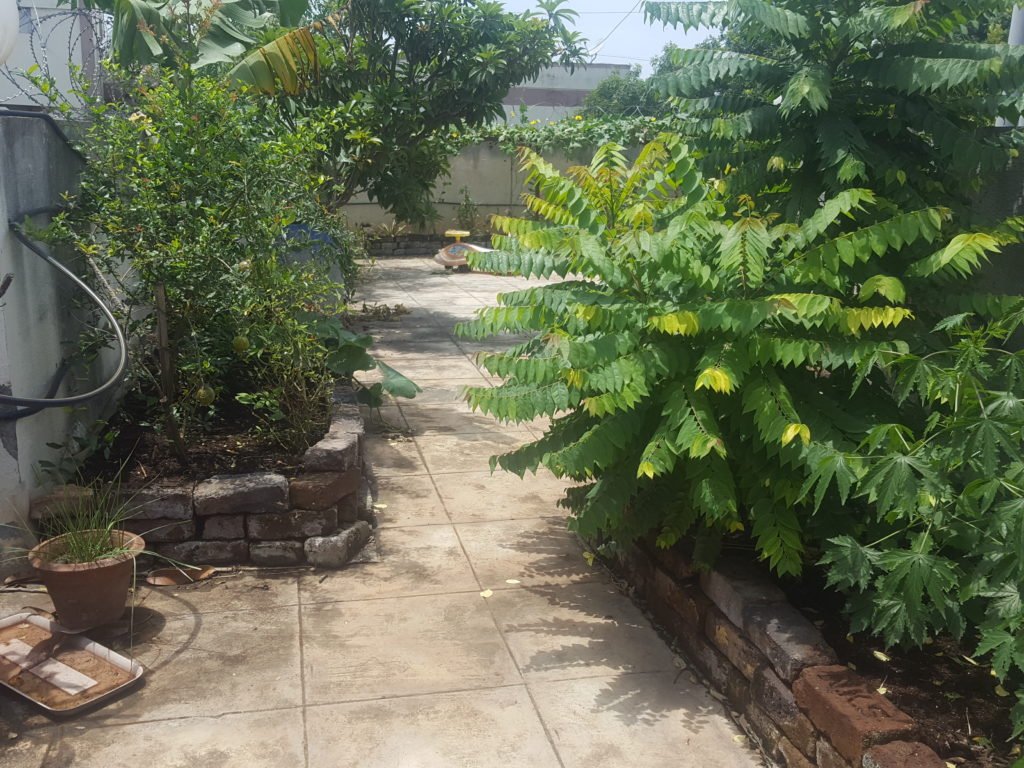
For container/ pots
Process is similar as with the plant bed. Lowest layer of sugarcane residue, then dry leaves and then compost.
Where to get dry leaves?
In tropical regions, deciduous trees shed leaves in winter. Leaf fall starts around November and continues till June. Dry leaves is challenge for people. Often dry leaves are burnt since that seems a convenient option. At the same time, there are people like Sejal, who need dry leaves for compost.
Why not bring “availability” and “requirement” together? That is what Sejal does. She collects dry leaves from apartments, school nearby who have trees. It is a permanent arrangement for her now. Donors collect dry leaves in gunny bags and inform Sejal. Sejal then collects tjose gunny bags. (For details about this initiative, HOME)
Regular Care
Sejal provides jeevamrut to soil to keep microbial activity in the soil to keep it healthy. As pesticide, spray of diluted jeevamrut and neem oil is used every 15 days.
She also makes cakes of cow dung and provides them to the soil when they are dry. Sejal warns against using wet, fresh cow dung as it can introduce white grubs in the soil.
If we keep providing regular compost, soil continues to be nutrient-rich. Earthworms do their role.
Watering
Initially Sejal used to provide water using watering can. Gradually as the garden grew, watering became a time-consuming activity. Hence, she implemented drip-irrigation and sprinklers. Apart from convenience, this system also is beneficial to plants and soil.
We will cover DIY Drip Irrigation system for your terrace in next few blogs.
Sejal often is “over-watering”. For plant roots, moisture is essential. But out of concern and due to lack of knowledge about plant root system, we tend to water more. Over-watering is problematic since it leaches nutrients and invites various pest.
We will devote a blog to watering in our subsequent discussions
Seed Management
Sejal has great tip that will help you save on seeds.
Instead of buying seeds from market all the time, Sejal allows some fruits to ripe on the plant. Suppose, you have ridge gourd plant. Don’t pluck all the ridge gourds from it. Leave one or two on the plant. It will ripe, and eventually dry out. Once it is completely dry, rupture it, take out the seeds and store them in paper envelopes to be sowed later. This way, you invest in seeds only once.
If you are a group of gardeners, you can create a seed bank in the group. All members will contribute seeds and take away seeds they want. It is a great way for saving money, interact with like-minded people and a great social and collaborative activity.
Pest Management
Take a used plastic container, fill it with lemon juice + sugar + water mixture and bury it in the plant bed. Container should be deep in the plant bed, with only its upper edge at the surface. Snails attracted to this mixture, fall in the container and die. Instead of lemon shorbet, beer too can be used.
Intercropping is a preventive measure for pest management. Every plant family has a set of pests associated with it. Intercropping involves having a variety of plants in the same bed/ container. E.g. Suppose tomato plants are in the same place, then pest that attacks tomato will eat away all plants. If same plants are spread over the area, some would fall prey to pest attack, and some would be saved.
Plants with strong odor, like Basil, Tulsi, Marigold repel insects. Add such a plant to every bed/ container as a natural way of pest management.
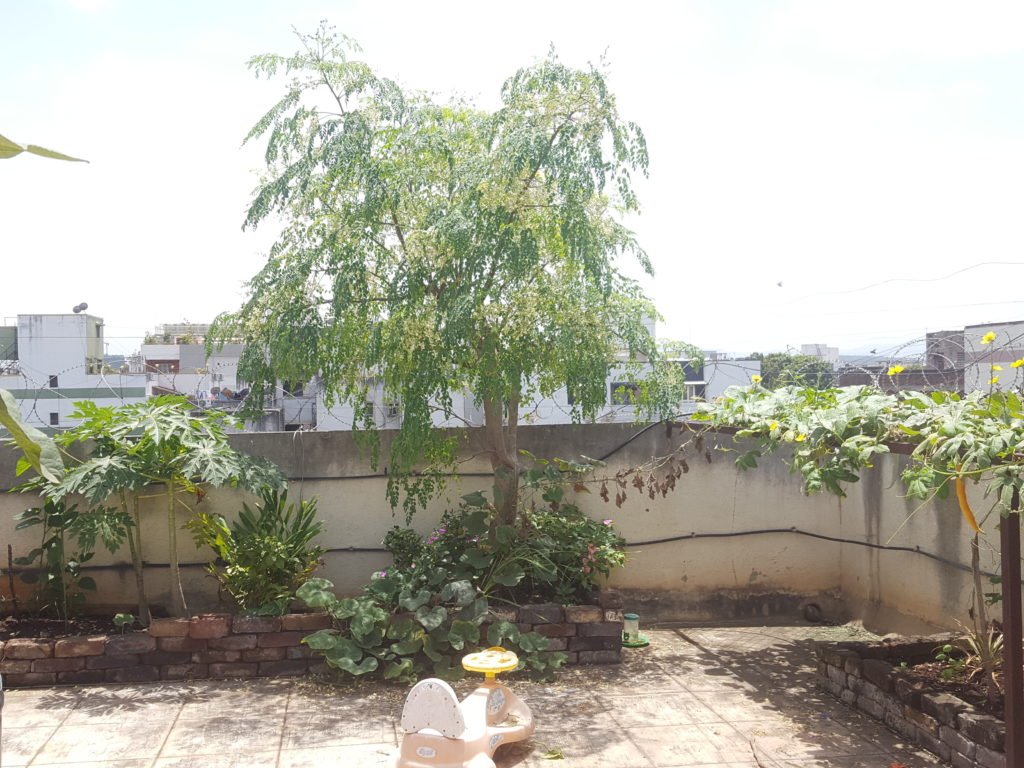
Drum Stick Tree
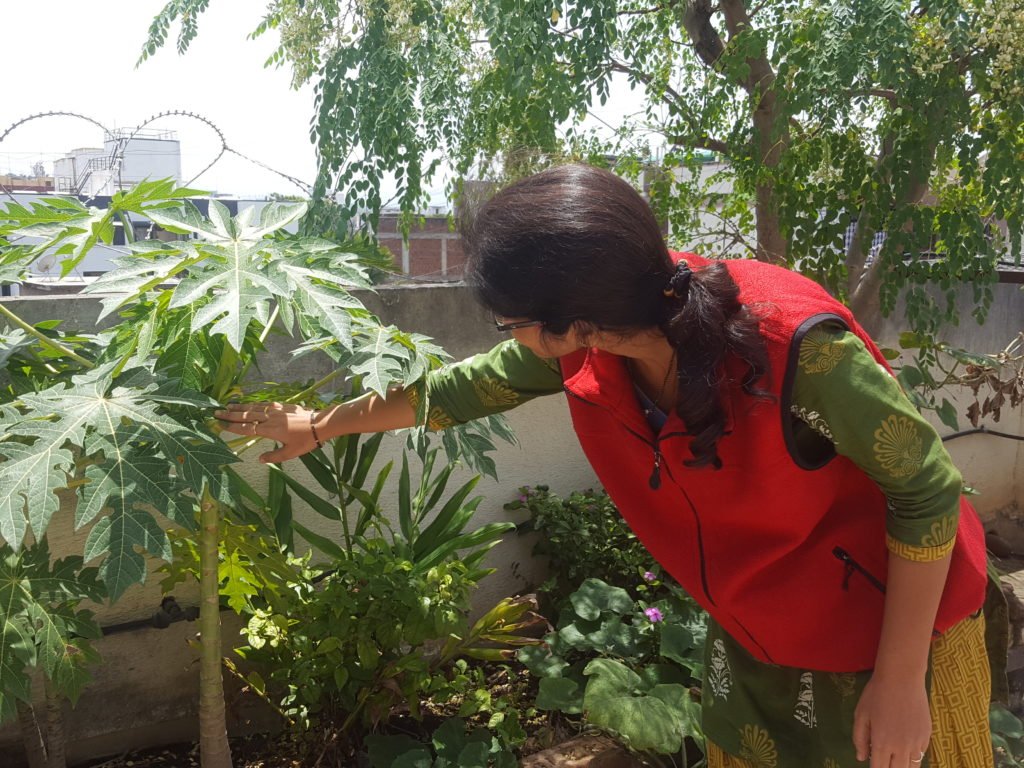
Sejal checking out Papaya flowers
Produce from terrace garden
Vegetables
Pumpkin, Sponge Gourd, White Gourd, Snake Gourd, Ash Gourd, various beans, Ginger, Fenugreek, Spinach, Coriander
Fruits
Fig, Guava, Passion Fruit, Pomegranate, Custard Apple, Papaya
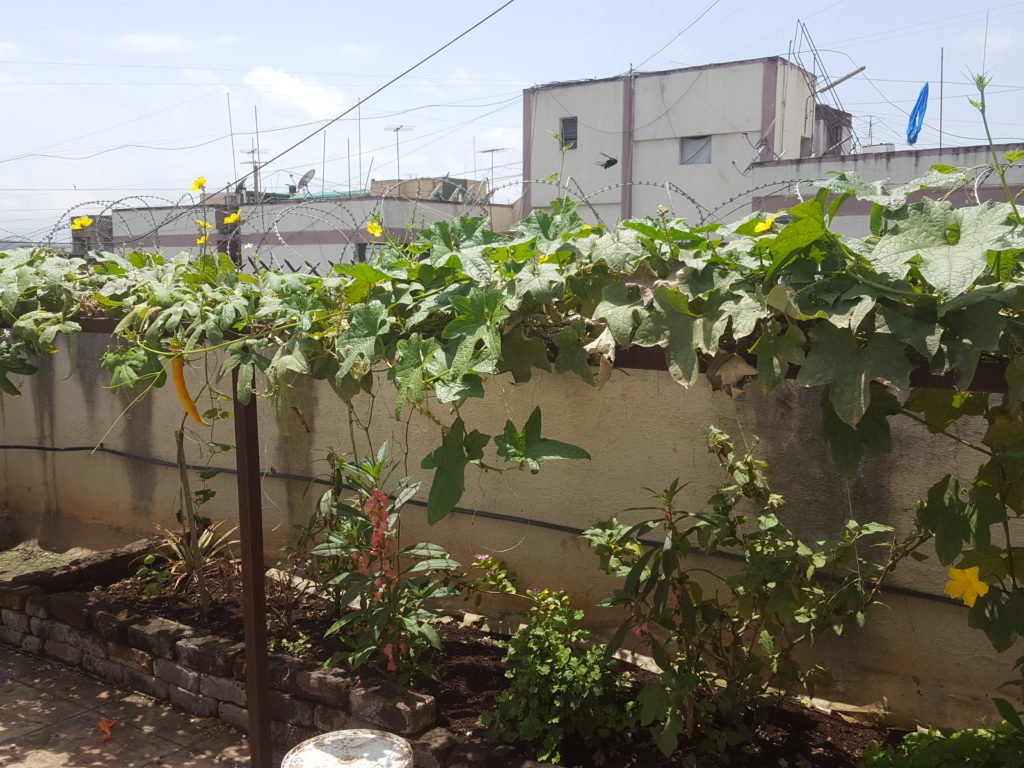
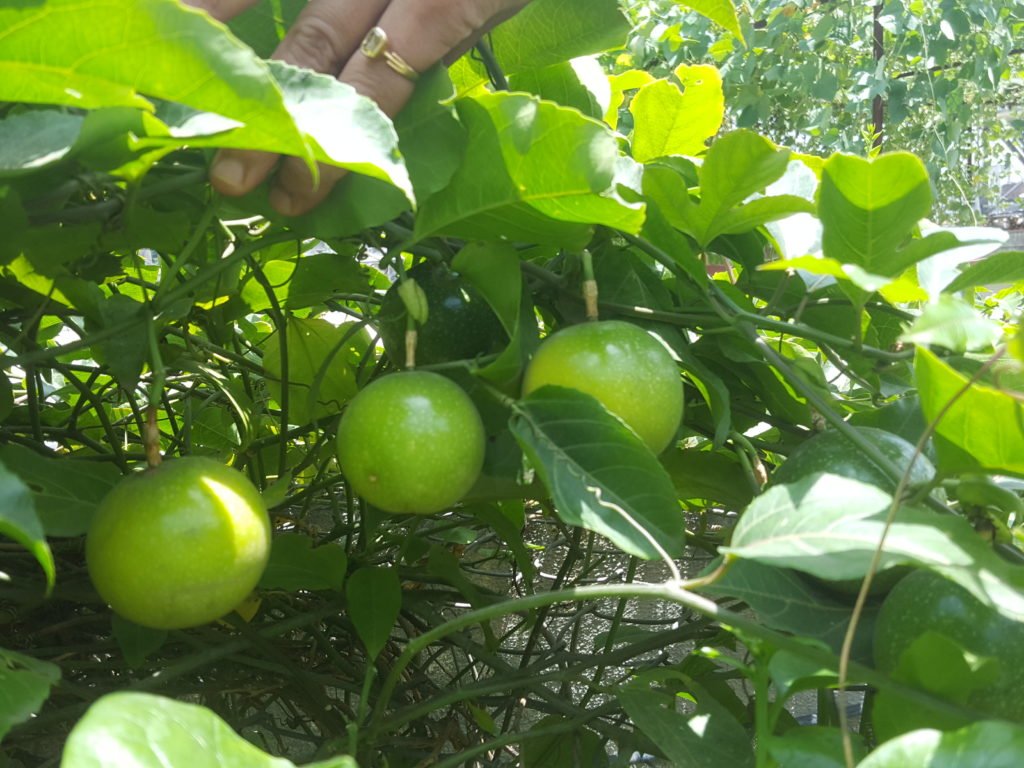
Passion Fruits, after a while I stopped counting. There were so many fruits on that creeper
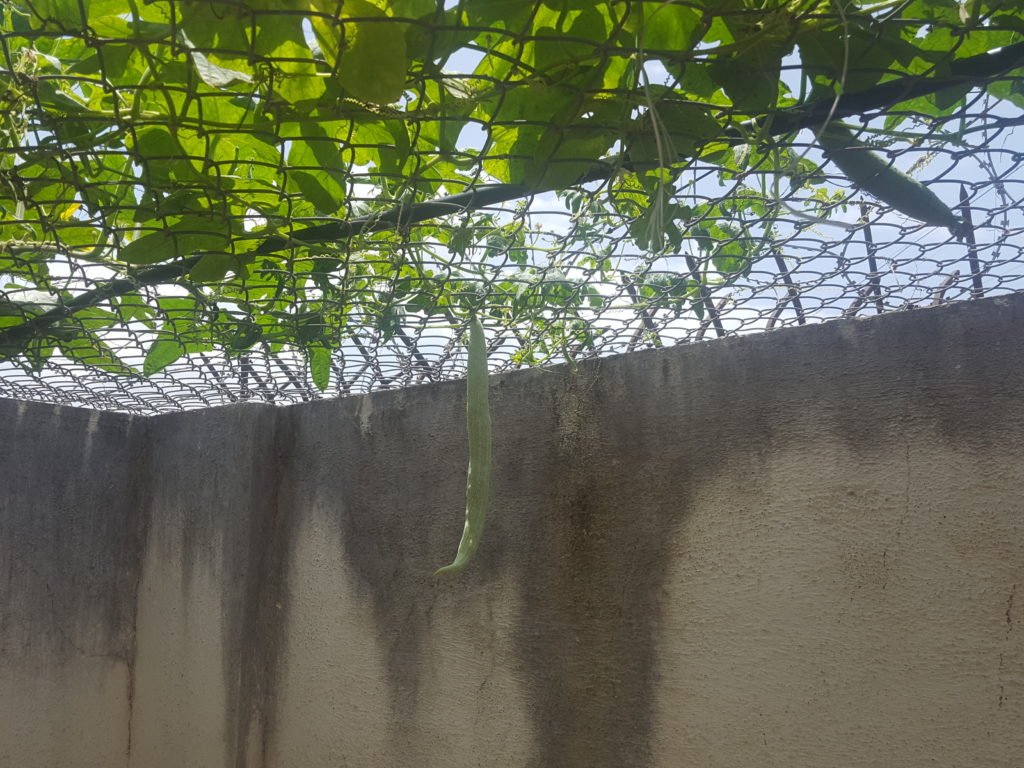
Snake Gourd
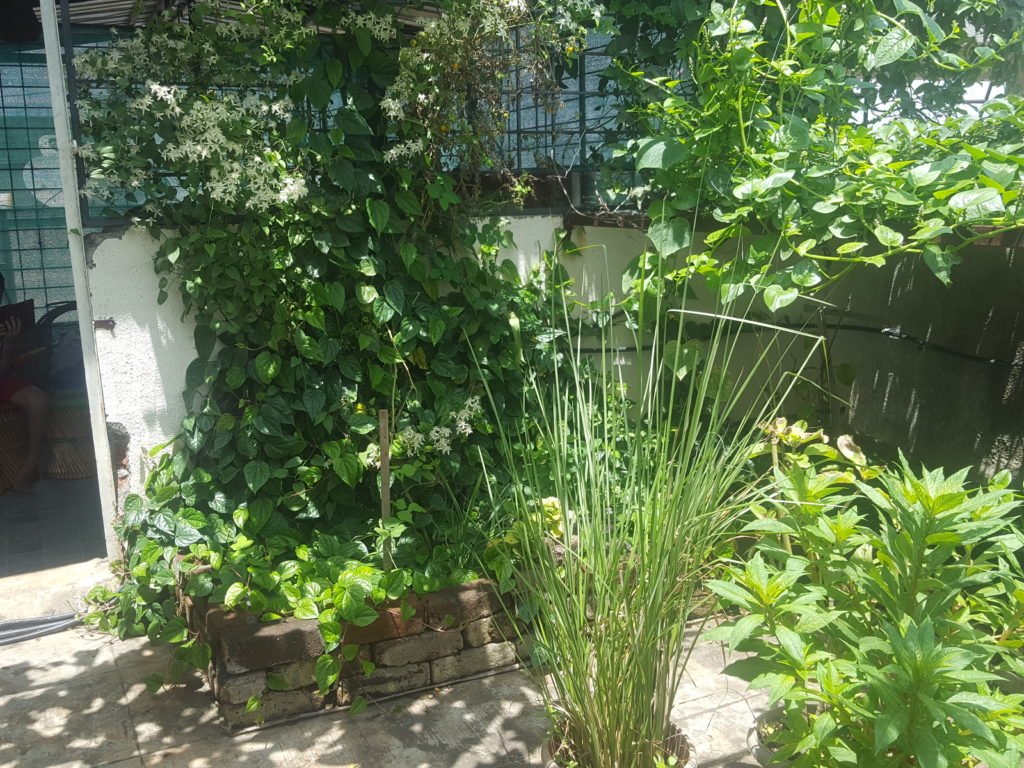
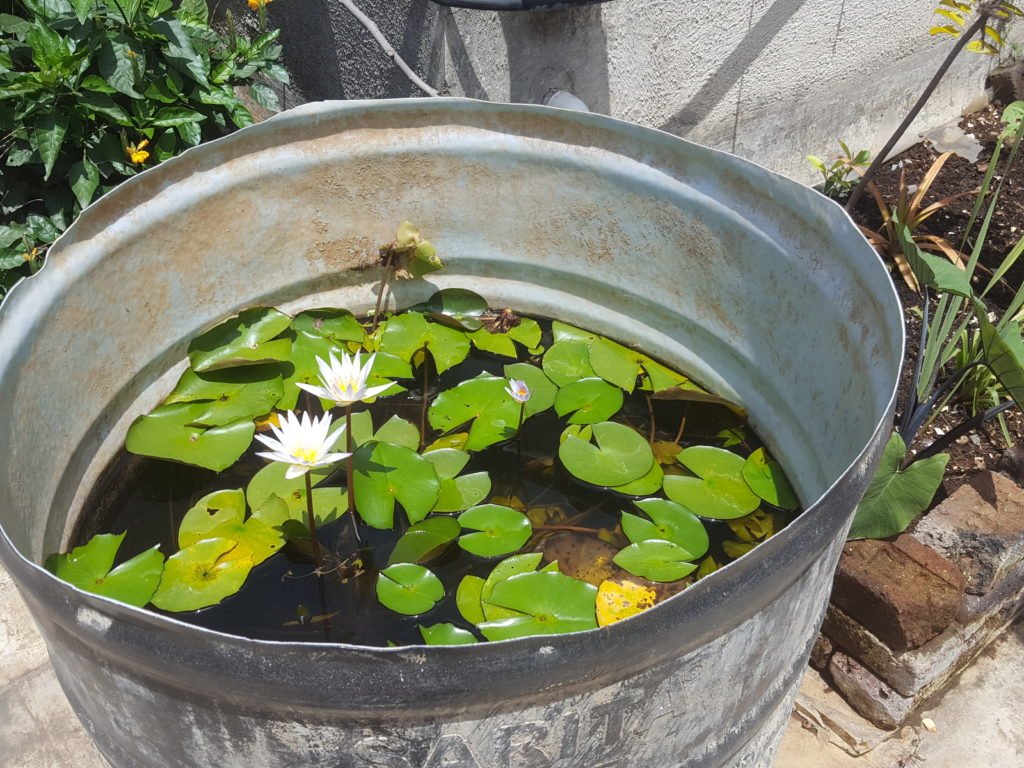
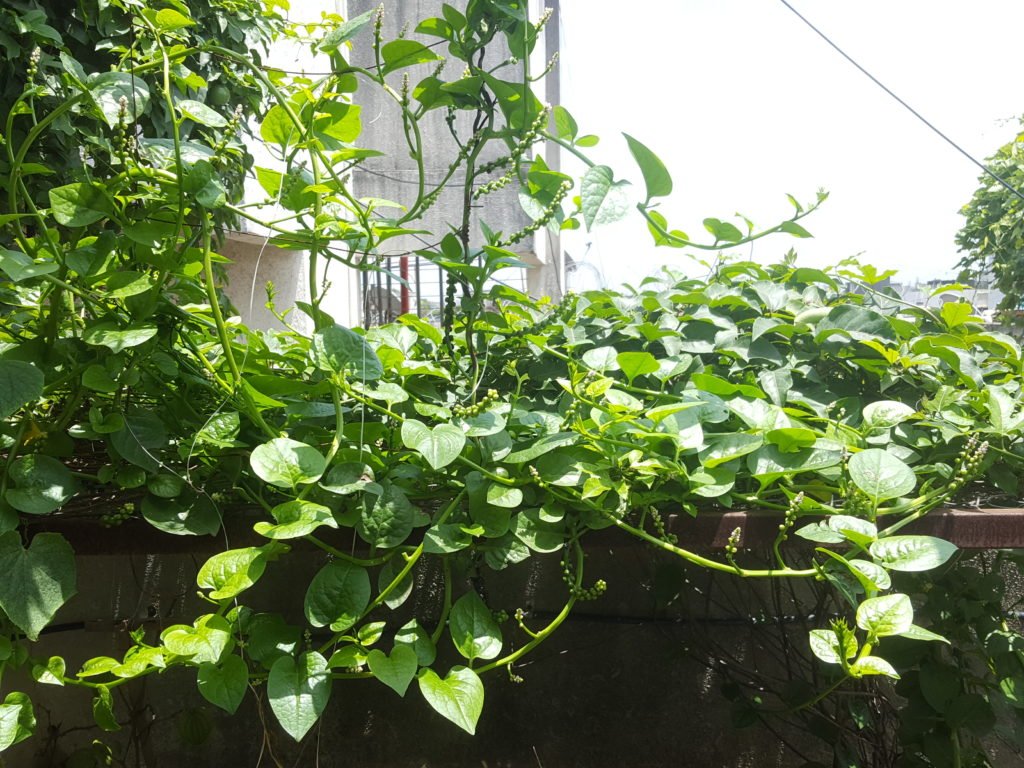
Black pepper
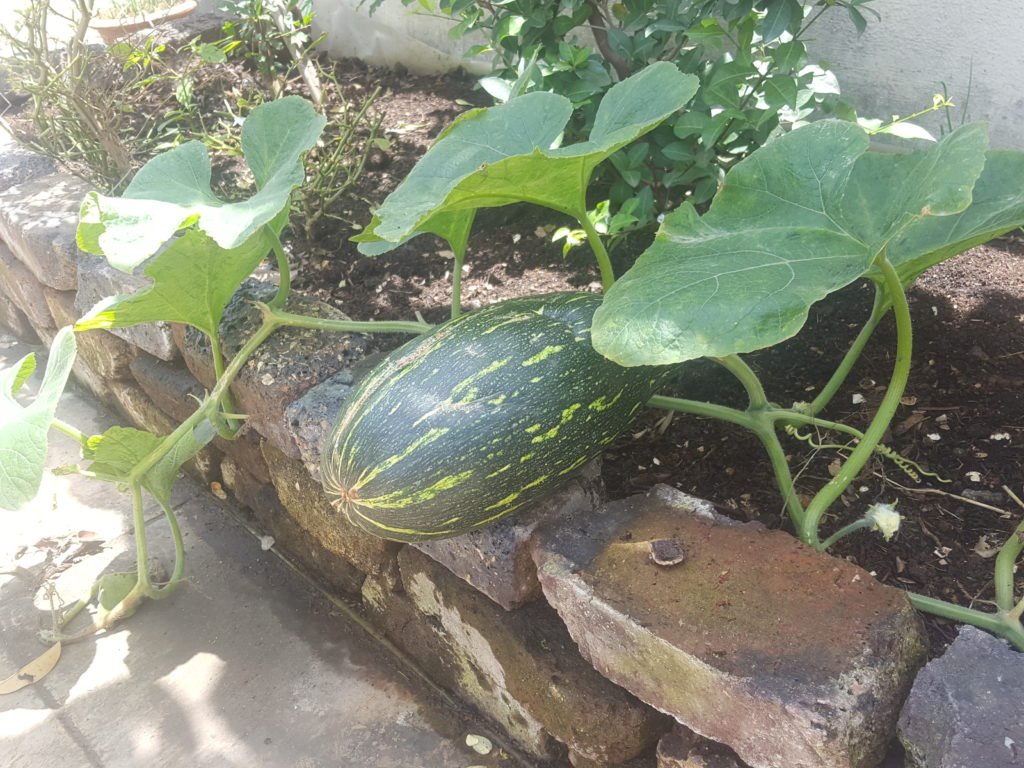
Pumpkin
Concluding Words from Sejal
Start a garden only if you are ready to get your hands dirty. You can get help from others from time to time, but paid help has limitations. Gardening is product of passion, hardwork, patience, all combined.

Aditi Deodhar
Creator, Brown Leaf


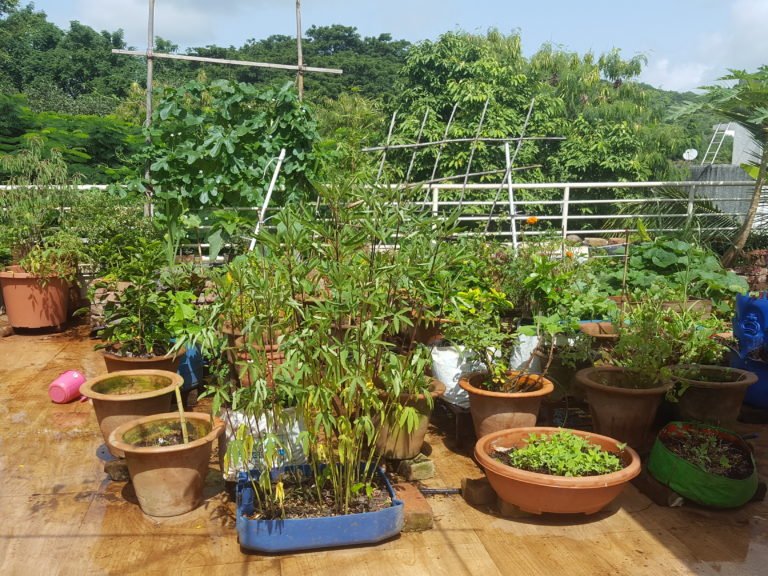

My first visit to the Garden of a Brown Leaf member was to Sejal’s terrace garden. Very well planned and maintained . Truly inspiring. 🙂
Well done. Shejalji. If this campaign spear all over ssocieties the problem of wet waste will ddefiantly controlled. Please you may share widely to others I wish you success. I will also try this in our society. Thanks-.
It would be good to know how Sejal tai practices crop rotation to keep pests under control.